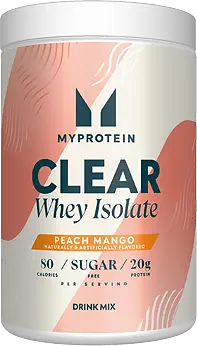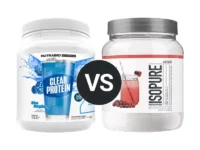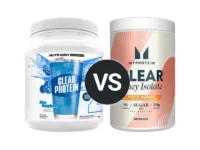Knowledge BaseYou're Questions Answered
What is the difference between clear protein and normal protein?
The main difference between clear protein and normal protein lies in their formulation, texture, and intended use. Clear protein is typically made using protein isolates, which have been processed to remove most of the fat, lactose, and other components, leaving a purer form of protein. Normal protein powders, on the other hand, can include a variety of protein sources such as whey concentrate, casein, or plant-based proteins, and tend to have a creamier, thicker texture when mixed with liquids.
Key Differences
- Formulation
Clear Protein: Clear protein powders are generally made with protein isolates, such as whey isolate or collagen peptides, which are processed to be more refined. This results in a clear, almost juice-like consistency when mixed with water, making it a lighter alternative to traditional protein powders.
Normal Protein: Regular protein powders often include protein concentrates, blends, or casein, which contain more fats, lactose, and carbohydrates. These ingredients contribute to the thicker and creamier texture that is more common in milkshake-style protein drinks.
- Texture and Consistency
Clear Protein: When mixed with water, clear protein dissolves into a transparent liquid that resembles a juice or flavored water. It's light and easy to drink, making it popular for those who prefer a thinner consistency or find creamy shakes too heavy.
Normal Protein: Traditional protein powders tend to form thicker, creamier shakes that resemble a milkshake when mixed with liquids. This consistency is preferred by many for meal replacement shakes or post-workout recovery drinks.
- Use and Preference
Clear Protein: Often chosen by people who want a lighter, more refreshing protein option, especially after workouts or as a hydration-friendly protein source. It can be easier to digest and may feel less heavy on the stomach.
Normal Protein: Regular protein powders are typically used by those who prefer a more filling protein shake, often used in meal replacements, smoothies, or as part of a muscle-building regimen.
Related Questions

Your Answer
We are a participant in the Amazon Services LLC Associates Program, an affiliate advertising program designed to provide a means for us to earn fees by linking to Amazon.com and affiliated sites.






